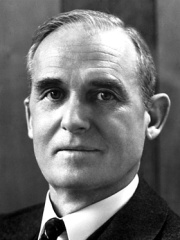
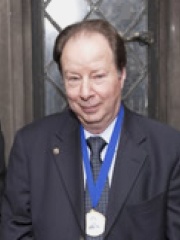
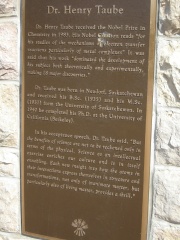
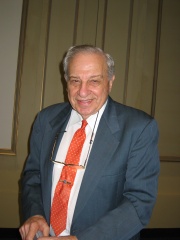

The Most Famous
CHEMISTS from Canada
This page contains a list of the greatest Canadian Chemists. The pantheon dataset contains 602 Chemists, 6 of which were born in Canada. This makes Canada the birth place of the 18th most number of Chemists behind Italy, and Netherlands.
Top 6
The following people are considered by Pantheon to be the most legendary Canadian Chemists of all time. This list of famous Canadian Chemists is sorted by HPI (Historical Popularity Index), a metric that aggregates information on a biography's online popularity.

1. William Giauque (1895 - 1982)
With an HPI of 74.94, William Giauque is the most famous Canadian Chemist. His biography has been translated into 59 different languages on wikipedia.
William Francis Giauque (; May 12, 1895 – March 28, 1982) was a Canadian-born American chemist and Nobel laureate. He was recognized in 1949, for his studies in the properties of matter, at temperatures close to absolute zero. He spent virtually all of his educational and professional career at the University of California, Berkeley.

2. Sidney Altman (1939 - 2022)
With an HPI of 70.50, Sidney Altman is the 2nd most famous Canadian Chemist. His biography has been translated into 56 different languages.
Sidney Altman (May 7, 1939 – April 5, 2022) was a Canadian-American molecular biologist, who was the Sterling Professor of Molecular, Cellular, and Developmental Biology and Chemistry at Yale University. In 1989, he shared the Nobel Prize in Chemistry with Thomas R. Cech for their work on the catalytic properties of RNA.

3. Henry Taube (1915 - 2005)
With an HPI of 70.02, Henry Taube is the 3rd most famous Canadian Chemist. His biography has been translated into 56 different languages.
Henry Taube (November 30, 1915 – November 16, 2005) was a Canadian-born American chemist who was awarded the 1983 Nobel Prize in Chemistry for "his work in the mechanisms of electron-transfer reactions, especially in metal complexes." He was the second Canadian-born chemist to win the Nobel Prize, and remains the only Saskatchewanian-born Nobel laureate. Taube completed his undergraduate and master's degrees at the University of Saskatchewan, and his PhD from the University of California, Berkeley. After finishing graduate school, Taube worked at Cornell University, the University of Chicago and Stanford University. In addition to the Nobel Prize, Taube also received many other major scientific awards, including the Priestley Medal in 1985 and two Guggenheim Fellowships early in his career (1949 and 1955), as well as numerous honorary doctorates. His research focused on redox reactions, transition metals and the use of isotopically labeled compounds to follow reactions. He had over 600 publications including one book, and had mentored over 200 students during his career. Taube and his wife Mary had three children; his son Karl is an anthropologist at the University of California Riverside.

4. Rudolph A. Marcus (b. 1923)
With an HPI of 66.81, Rudolph A. Marcus is the 4th most famous Canadian Chemist. His biography has been translated into 52 different languages.
Rudolph Arthur Marcus (born July 21, 1923) is a Canadian-born American chemist who received the 1992 Nobel Prize in Chemistry "for his contributions to the theory of electron transfer reactions in chemical systems". Marcus theory, named after him, provides a thermodynamic and kinetic framework for describing one electron outer-sphere electron transfer. He is a professor at Caltech, Nanyang Technological University, Singapore and a member of the International Academy of Quantum Molecular Science.
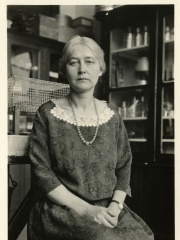
5. Maud Menten (1879 - 1960)
With an HPI of 59.49, Maud Menten is the 5th most famous Canadian Chemist. Her biography has been translated into 31 different languages.
Maud Leonora Menten (March 20, 1879 – July 17, 1960) was a Canadian physician and chemist. As a bio-medical and medical researcher, she made significant contributions to enzyme kinetics and histochemistry, and invented a procedure that remains in use. She is primarily known for her work with Leonor Michaelis on enzyme kinetics in 1913. The paper has been translated from its written language of German into English. Maud Menten was born in Port Lambton, Ontario and studied medicine at the University of Toronto (B.A. 1904, M.B. 1907, M.D. 1911). She was among the first women in Canada to earn a medical doctorate. Since women were not allowed to participate in research in Canada at the time, Menten looked elsewhere to continue her work. In 1912, she moved to Berlin where she worked with Leonor Michaelis and co-authored their paper in Biochemische Zeitschrift, demonstrating that the rate of an enzyme-catalyzed reaction is proportional to the amount of the enzyme-substrate complex. This relationship between reaction rate and enzyme–substrate concentration is known as the Michaelis–Menten equation. After working with Michaelis in Germany she entered graduate school at the University of Chicago where she obtained her Ph.D. in 1916. Her dissertation was entitled "The Alkalinity of the Blood in Malignancy and Other Pathological Conditions; Together with Observations on the Relation of the Alkalinity of the Blood to Barometric Pressure". Menten joined the faculty of the University of Pittsburgh in 1923 and remained there until her retirement in 1950. She became an assistant professor and then an associate professor in the School of Medicine and was the head of pathology at the Children's Hospital of Pittsburgh. Her final promotion to full professor, in 1948, was at the age of 69 in the last year of her career. Her final academic post was as a research fellow at the British Columbia Medical Research Institute.

6. Martin Kamen (1913 - 2002)
With an HPI of 52.12, Martin Kamen is the 6th most famous Canadian Chemist. His biography has been translated into 15 different languages.
Martin David Kamen (August 27, 1913, Toronto – August 31, 2002, Montecito, California) was an American chemist who, together with Sam Ruben, co-discovered the synthesis of the isotope carbon-14 on February 27, 1940, at the University of California Radiation Laboratory, Berkeley. He also confirmed that all of the oxygen released in photosynthesis comes from water, not carbon dioxide, in 1941. Kamen was the first to use carbon-14 to study a biochemical system, and his work revolutionized biochemistry and molecular biology, enabling scientists to trace a wide variety of biological reactions and processes. Despite being blacklisted for nearly a decade on suspicion of being a security risk, Kamen went on to receive the Albert Einstein World Award of Science in 1989, and the U.S. Department of Energy's 1995 Enrico Fermi award for lifetime scientific achievement.
People
Pantheon has 6 people classified as Canadian chemists born between 1879 and 1939. Of these 6, 1 (16.67%) of them are still alive today. The most famous living Canadian chemists include Rudolph A. Marcus. The most famous deceased Canadian chemists include William Giauque, Sidney Altman, and Henry Taube.
Living Canadian Chemists
Go to all RankingsDeceased Canadian Chemists
Go to all RankingsWilliam Giauque
1895 - 1982
HPI: 74.94
Sidney Altman
1939 - 2022
HPI: 70.50
Henry Taube
1915 - 2005
HPI: 70.02
Maud Menten
1879 - 1960
HPI: 59.49
Martin Kamen
1913 - 2002
HPI: 52.12
Overlapping Lives
Which Chemists were alive at the same time? This visualization shows the lifespans of the 5 most globally memorable Chemists since 1700.

